Built to the same exacting standards of the A-series platform, the AV-1's main consumer sector was photo enthusiasts who want a simple and easy-to-operate SLR camera or one to start with, but one that allows depth-of-field control, and AE flash photography with specific flash units.
In simple focus-and-shoot terminology, all you have to do is preset the aperture opening of the lens and the shutter speed dial to A, frame, focus, and release the shutter. Images should be nothing but perfect. For an added level of creativity, the AV-1 does come with a Backlight Compensation button, B mode, and a Self-Timer that can also be used with an AE flash.
The Canon AV-1, when complemented with Canon's FD legacy lenses, which are equally favored by current DSLR and mirrorless digital camera enthusiasts, is definitely a way to get you started, and your enthusiasm for film photography is inspired!
Canon AV 1 Video Manual 1: Overview
The Canon AV-1 was the A-series aperture-priority model and the simplest of the A cameras. The AV-1 is a capab...
Design and Build
The Canon AV-1 is an FD mount Aperture-priority AE 35mm SLR film camera with a Focal Plane Shutter and electronically controlled step-less shutter speed range from 2 to 1/1000 second, and B. Flash synchronization at 1/60 second. The film's ISO speed rating is 25 to 2600.
Metering is TTL (Through-the-Lens) Center-weighted Average, the viewfinder screen is a split-image/microprism rangefinder, and screen coverage is 93% horizontal and 93% vertical. The camera is fitted with a 5-step shutter speed dial, with no manual shutter speed setting. The shutter release is a 2-step electromagnetic.
The AV-1 is also fitted with a Backlight Compensation button, a 10-second delay Self-Timer, with exposure information through the viewfinder readout.
Basic Camera Features
Elegant in black, the AV-1 is also available in chrome.
The front of the AV-1 is almost plain, with only the Backlight Compensation Switch located off the right vertical of the lens mount housing, with only the battery chamber and its redesigned flap cover, much easier to click open with the slide switch, taking up almost the whole of the left side of the front panel. The battery flap has a hump that acts as a nominal finger grip.
On the left of the top plate is the Film Rewind Crank, which also functions as the pull-up Camera Back Release, integrated with the Film ISO Selector dial with a Lock Button beside it. The small button towards the front of the top plate is the Battery Check button.
A hot shoe occupies the top of the pentaprism, and on the right, the 5-step Shutter Selector dial with a lock button on its axis, Self-Timer LED, the lock-controlled 2-step electromagnetic Shutter Release button with Cable Release socket, Film Advance Crank, and the additive type Frame Counter window.
The back of the camera is equally plain, with only the viewfinder window and the fixed hinge-type film back.
Located on the bottom plate of the AV-1 are the Winder Coupling cover, Winder Pin guide, Film Rewind Release, Tripod Socket, and Winder Terminal Contacts.
The film box is an easy load system with the Film Chamber, Film Guide Rails and Shutter Curtain, Film Forward Sprocket, and Multi-Slot Take Up Spool, located sequentially from left to right.
Viewfinder Readout
The viewfinder readout of the AV-1 is straightforward; the screen is populated by the split-image/microprism rangefinder with a vertical shutter speed bar located on the lower right peripheral, with a needle pointing to the shutter speed at which the image will be recorded.
Over- and underexposed values will be indicated by the needle moving upward or downward outside of the shutter speed scale limit, and the square dot aligned with the 1/30-second shutter speed mark is the camera shake threshold.
When the shutter speed reading is below the dot, a camera shake is inevitable; time to place the camera on a solid surface or tripod before taking the shot.
Shutter Modes
The 5-step Shutter Mode of the Canon AV-1 should be adequate for most of your photography needs. Prime is the A mode that will set the camera into the Aperture-Priority mode.
This setting will let the camera control the shutter speed electronically from 2 to 1/1000 second, based on the lens aperture opening that you set, ensuring that the exposure of your image is fully optimized.
- A - The shutter setting lets the camera do the talking, while you do the walking. Pre-set the Shutter Mode to A, and the lens aperture to what you want to shoot in, and fire away.
- 60+Flash Bolt - Shutter setting for synchronization of flash units at a shutter speed of 1/60 second.
- B - Bulb Mode for long exposure shots. Best to keep the camera steady on a tripod, a cable release to release the shutter, and a stopwatch to time the exposure.
- Self-A - Self-Timer mode without flash connectivity. The shutter will fire after a 10-second delay.
- Self-Flash Bolt - Used for Self-Timer shooting with normal flash units (other than specified Canon Speedlites).
Note: The Self-Timer sequence can be canceled by pressing the Battery Check button.
Understanding The DoF (Depth-of-Field) Scale
The Canon AV-1 does not come with a DoF preview facility. Generally, though, all Canon FD lenses have the DoF scale etched on the lens barrel, and reading the DoF distance from the settings of the lens barrel is quite easy.
First, read the aperture value; it lines up with the orange line on the apex of the lens barrel (which is at f/8 on the accompanying image). Next, look at the smaller aperture size etched on both sides of the orange line, and read off the distance measurement at the point where the aperture reading points to.
In the example, the left aperture etching points to a distance of 5 meters, and the right etching to Infinity. This is the distance range where the image will be in focus. It is safe to say, then:
It might take some time for you to figure this out, but once you have it, it will never go away ever again.
Backlight Compensation
The Backlight Compensation button, when pressed, will automatically reduce the shutter speed by 1 1/2 steps to increase exposure. This is to ensure that backlit objects, for example, the front or facial features of a person standing with the back facing the sun, will have a better exposure value, which otherwise will be almost blacked out.
Battery and Battery Check
The Canon AV-1 requires a 6-volt 4LR44 battery or equivalent to operate. Under normal use, the battery should last about a year.
To check the battery level, set the Shutter Mode to 'A', then press the Battery Check button and view the needle response in the viewfinder. The battery is still good if the needle points to the area above the camera shake threshold, and needs to be replaced if the pointer is below the mark.
Camera Body Weight
The AV-1's body weight is 512 grams with the 4LR44 battery loaded.
Using The Camera
Like all Canons of the A-series, the Canon AV-1 is a technically refined camera, with a robust construction pedigree, one which you will enjoy using and learning with. It is often available at very reasonable rates, more often seen complete with a lens or two, which by itself is well known for stellar image quality.
The camera weighs in at 682 grams with a Canon FD 50mm f/18 lens attached is not really lightweight by today's standard, and sports the same sleek vintage design as the AE-1. A smooth operator, the camera handles easily, film loading and advance are straightforward and are normally fault-free, and metering is instantaneous, though the clunk-and-thunk of the mirror flip and shutter actuation may be a bit apparent (as on the sample I used), it should not deter you from capturing perfectly exposed images.
The most endearing trait of the AV-1 is its almost fault-free frame-and-shoot operation. All you have to do when all the preambles, lens, film, and battery are set is to preset the lens aperture to what you want to shoot at and fire away. Delve a bit more into what DoF (Depth-of-Field) is really all about, and see how photography improves.

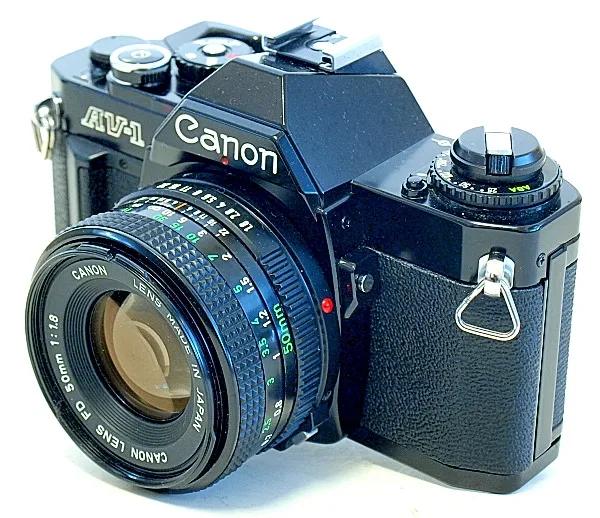
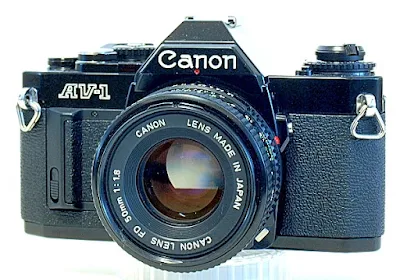




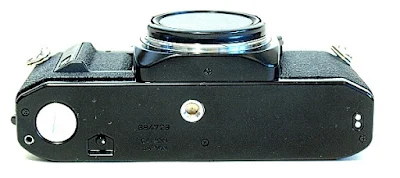
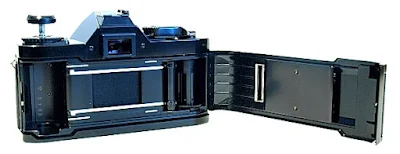

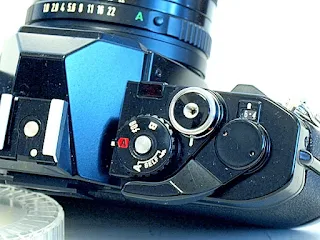














No comments:
Post a Comment